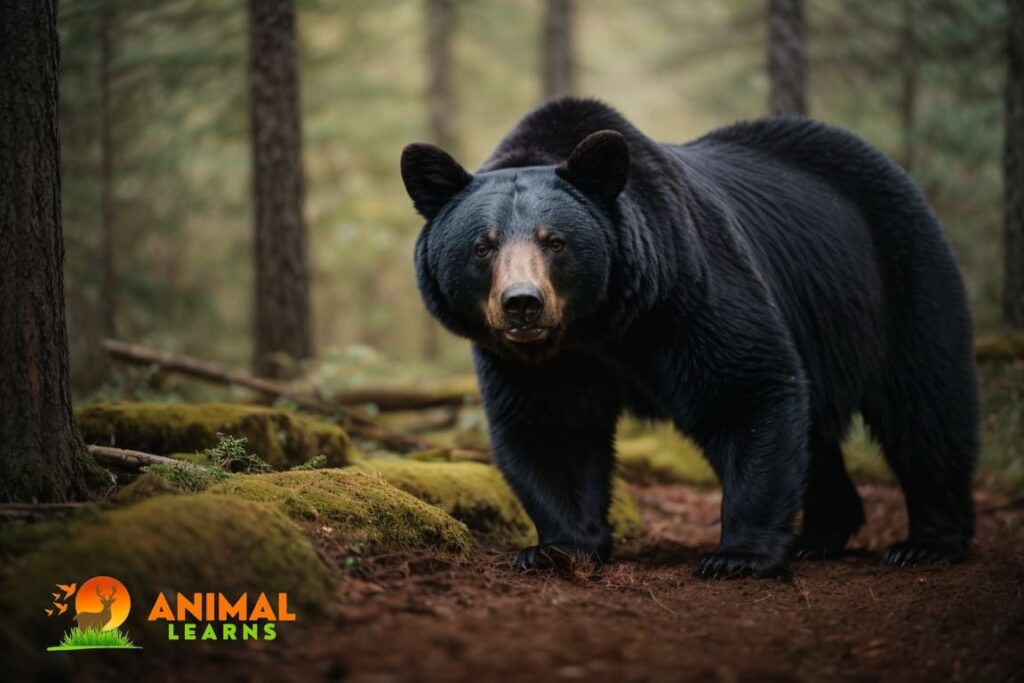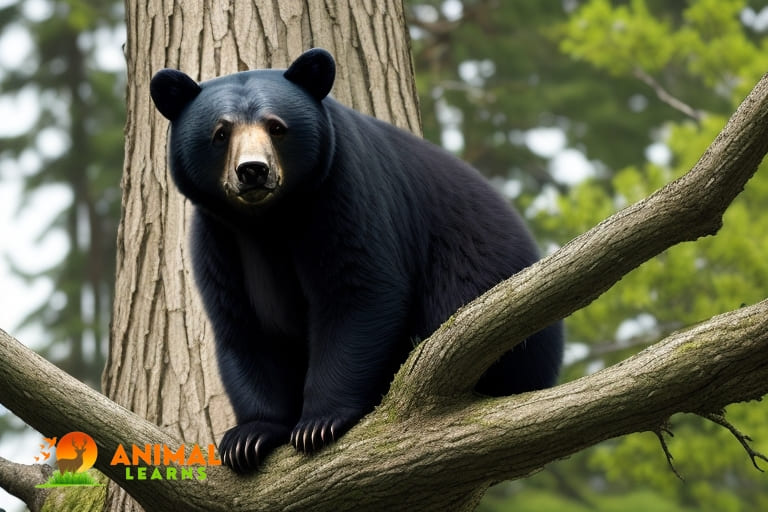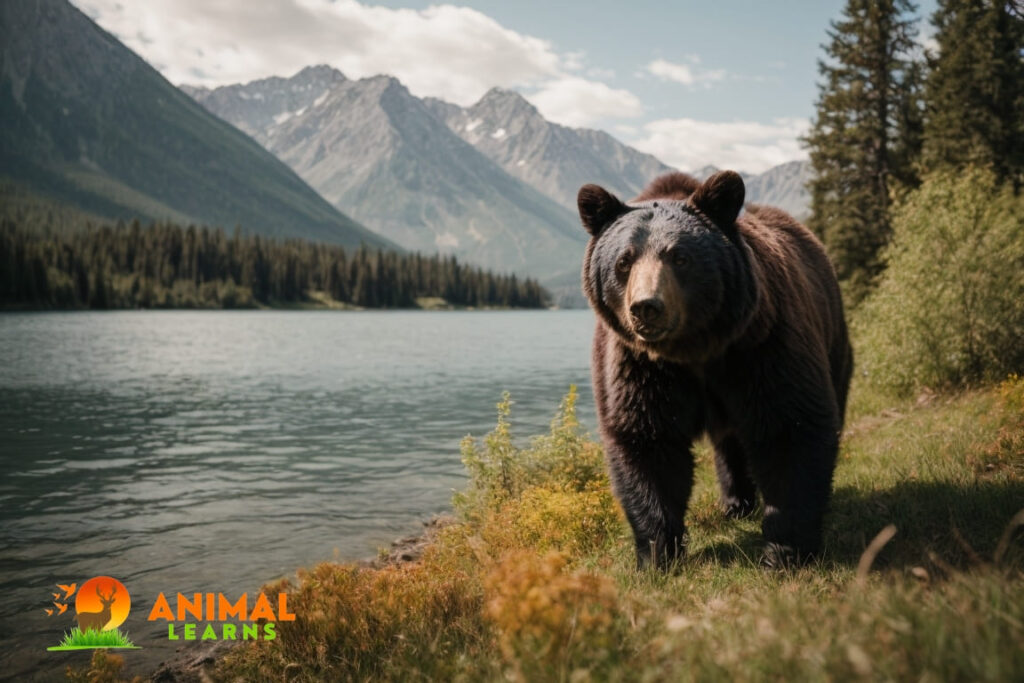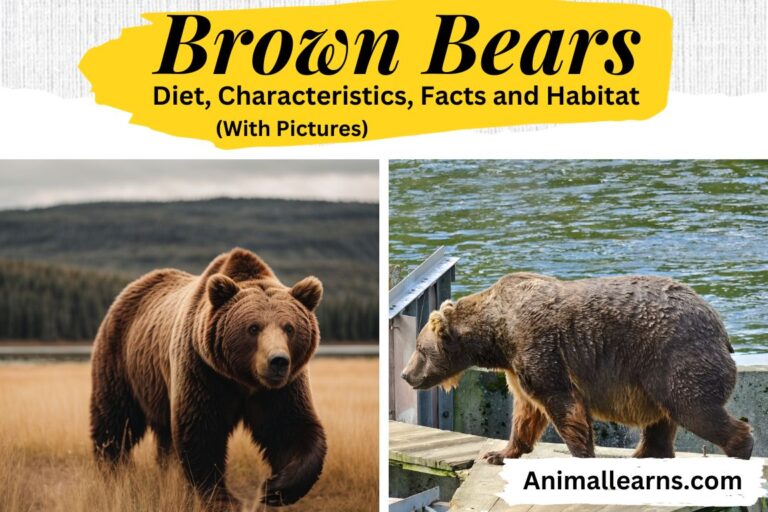Fascinating World of Black Bears

Black bears, scientifically Ursus americanus, are the most common North American bear species, with a range extending into northern Mexico.
The Black Bear, also known as the American Black Bear, represents a medium-sized bear species, occupying a wide range of forested habitats across North America. Depending on their coloration, black bears assume different names.
They might be called cinnamon bears, blue-gray or blue-black glacier bears, or even white bears, primarily found on Princess Royal Island, British Columbia. It’s important to note that black bears with brown fur, especially in western North America, are quite common.
However, they are sometimes mislabeled as brown bears, a term that truly belongs to the Ursus arctos species, also known as grizzly bears in North America, which are significantly larger in size.
Appearance
Contents

Size
Black bears are amazing quietest animals that come in different sizes, weights, and colors. Their size and weight depend on how old they are and whether they are male or female. Adult males are bigger than adult females, and they can be as long as 6.5 feet (2 meters) and as tall as 3.5 feet (1.1 meters) at the shoulder. Adult females are usually smaller, and they can be as long as 6 feet (1.8 meters).
Weight
Black bears can also weigh a lot or a little, depending on where they live, how much food they find, and how old they are. Adult males can weigh anywhere from 130 to 600 pounds (59 to 272 kilograms), and some of them can even weigh more than 700 pounds (318 kilograms). Adult females are lighter than males, and they can weigh between 90 to 400 pounds (41 to 181 kilograms).
Color
Black bears have different colors too, and they can be black, brown, cinnamon, blonde, or white. Even though they are called black bears, not all of them are black; in fact, many of them are brown or cinnamon, especially in some parts of the world. Their color is mostly determined by their genes, and sometimes they can have different colors in the same family of bears. This shows how diverse and beautiful black bears are.
Facial Features
Black bears have a unique face that is easy to recognize. They have a straight nose and a slightly curved face. Their ears are round and stand up on their head. Their eyes are small and brown, and they look very cute.
Claws
Black bears have claws that are perfect for their lifestyle. They are curved and sharp, but they don’t go back into their paws like cats. They use them to climb trees and dig for food. Their claws are shorter and thinner than grizzly bears’ claws.
Shoulder Hump
Black bears don’t have a big hump on their shoulders like grizzly bears do. Their shoulders are more flat and even with their body. This makes them look more sleek and agile.
Tail
Black bears have a very short tail that you might not even notice. It is only a few inches long and doesn’t stick out much.
Crescent Chest Mark
Some black bears have a special mark on their chest that looks like a crescent moon. It can be white or light-colored, but not all of them have it. It is a rare and beautiful feature that makes them stand out.
Body Shape
Black bears have a strong and sturdy body shape that helps them survive in the wild. They have powerful legs that can run fast and swim well. They have a thick fur that keeps them warm in the winter and cool in the summer. They are amazing animals that deserve our respect and admiration.
Diet
The diet of black bears (Ursus americanus) is diverse and adaptable, making them opportunistic omnivores. Here are important pieces of information about their diet:
| Aspect | Information |
| Diverse Diet | Black bears are opportunistic omnivores with a varied diet. |
| Plant-Based | They eat plants like berries, nuts, roots, and leaves. |
| Animal Matter | They consume insects, small mammals, and occasionally larger prey. |
| Scavengers | Black bears readily eat carrion. |
| Fish | They catch fish, especially during salmon runs. |
| Seasonal Changes | Diet shifts with the seasons, from plants to fruits and nuts. |
| Hibernation | They rely on stored fat during winter dormancy. |
| Feeding Skills | Bears have an excellent sense of smell and use sharp claws and jaws. |
| Human Conflicts | In areas with humans, they may be attracted to human food, causing conflicts. |
| Black bears fact | American black bears, in terms of black bears fact, have a diverse diet, consuming vegetation, fruits, insects, and occasionally small mammals and fish. |
Black Bear Characteristics

- Black bears are amazing animals that have many features and behaviors that help them survive in different habitats.
- They can live in forests, mountains, swamps, and even deserts.
- They can change their fur color to match their environment, from black to brown to white.
- They can swim very well and climb trees with ease.
- They are omnivorous, which means they eat both plants and animals.
- They can also eat human food, such as garbage or leftovers if they live near people.
- They are usually shy and peaceful, but they can defend themselves and their cubs with their sharp teeth and claws.
- They also hibernate in winter, which means they sleep for a long time to save energy and stay warm.
Understanding Black Bears Behavior and Lifestyle

What Do Black Bears Do?
Black bears are fascinating creatures that have a diverse diet consisting of both plant material and animals. They are known to eat berries, nuts, grasses, insects, small mammals, and occasionally larger mammals or carrion. Their strong sense of smell helps them locate food from great distances.
What Do Black Bears Do During the Day?
During the day, black bears often rest, groom themselves, and may move to find a shady spot to escape the heat. They can also be seen foraging for food during daylight hours, especially when food is abundant. Black bears are most active during dawn and dusk, which is known as crepuscular behavior.
What Do Black Bears Do in the Winter?
In colder regions, black bears enter a state of dormancy known as hibernation during the winter months. During hibernation, they reduce their metabolic rate, heart rate, and body temperature to conserve energy. They do not eat or drink during hibernation and rely on stored fat for sustenance.
What Do Black Bears Do at Night?
Black bears are more active at night, particularly when searching for food or mating. Their excellent night vision and keen sense of smell make them efficient nighttime hunters and foragers.
Black Bear Habitat and Distribution

Where Do Black Bears Live?
Black bears are amazing Black/brown animals that can live in many different places. They love forests, swamps, and mountains, but they also don’t mind being near people. They can adapt to almost any environment, from the thick trees of the Appalachian Mountains to the wide open spaces of the western U.S. and Canada.
Range of Black Bears in North America
Black bears are one of the most widespread bears in the world. They are found all over North America, from Canada to Mexico. They can live in hot or cold climates, as long as they have enough food and shelter. They are the only bears that live in Mexico, and they reach as far north as Canada’s Arctic islands.
Why Are There Black Bears in Florida?
Black bears in Florida have learned to live with their surroundings, which are mostly forests and swamps. These areas have plenty of food for them, like berries and acorns. But they also have to deal with humans, who sometimes take over their land or get too close to them. That’s why it’s important to respect their space and keep them wild.
Do Black Bears Only Exist in North America?
No, black bears are not only found in North America. They also have relatives in Asia, called Asian black bears (Ursus thibetanus). These bears look similar to American black bears, but they have some differences too. For example, they prefer higher altitudes and more dense forests than their American cousins.
Black Bears in India: A Closer Look
In India, there is a special kind of black bear, called the Asiatic black bear (Ursus thibetanus). This bear is also known as the “moon bear” because of the white crescent mark on its chest.
These bears live in the forests of India and other nearby countries, but they are in danger because of habitat loss and poaching. There are people who are trying to save them and protect their homes.
Black Bear Survival
Black bears are amazing mammals that can survive in many different habitats. They eat all kinds of things, from plants and berries to insects and small animals. This helps them find food all year round. Black bears are also great at climbing and swimming, which helps them escape danger and find more food.
In the winter, many black bears sleep a lot but not too deeply, so they can save energy and still be aware of their surroundings. They use smells and sounds to mark their territory and communicate with other bears, which helps them avoid fights.
They also have sharp senses of smell and hearing, which help them find food and avoid threats. All these skills make black bears very strong and adaptable in the wild.
Black Bear Adaptation

Black bears, also known as Ursus americanus, are a fascinating species that have adapted to thrive in various environments across North America. One of their most notable adaptations is their omnivorous diet, which allows them to consume a wide range of food sources, from fruits and nuts to insects and small mammals.
Their keen sense of smell, one of the most acute among land animals, helps them locate food even from great distances. During winter months when food is scarce, black bears enter a state of dormancy called hibernation, which conserves energy. Their fur provides insulation against cold temperatures, and their solitary nature helps minimize competition for resources.
These adaptations have enabled black bears to be highly adaptable and resilient in the face of changing environmental conditions, contributing to their continued survival as a species.
FAQs
Are black bears dangerous to humans?
Black bears are generally not aggressive toward humans but can be dangerous if provoked or if they associate humans with food.
Do black bears hibernate?
Yes, black bears hibernate during the winter months to conserve energy when food is scarce.
How can I stay safe if I encounter a black bear?
To stay safe during a black bear encounter, remain calm, speak calmly, back away slowly, do not run, carry bear spray, and make noise to alert the bear to your presence.
What should I do if I see a black bear in my backyard?
If you spot a black bear in your backyard, give it space, remove food attractants, make noise to encourage it to leave, and contact local wildlife authorities if it lingers.
Do black bears only exist in North America?
Yes, black bears are primarily found in North America, inhabiting various regions across the continent. They are not found in the wild outside of North America, but some may be housed in zoos and wildlife facilities worldwide for conservation and education.












